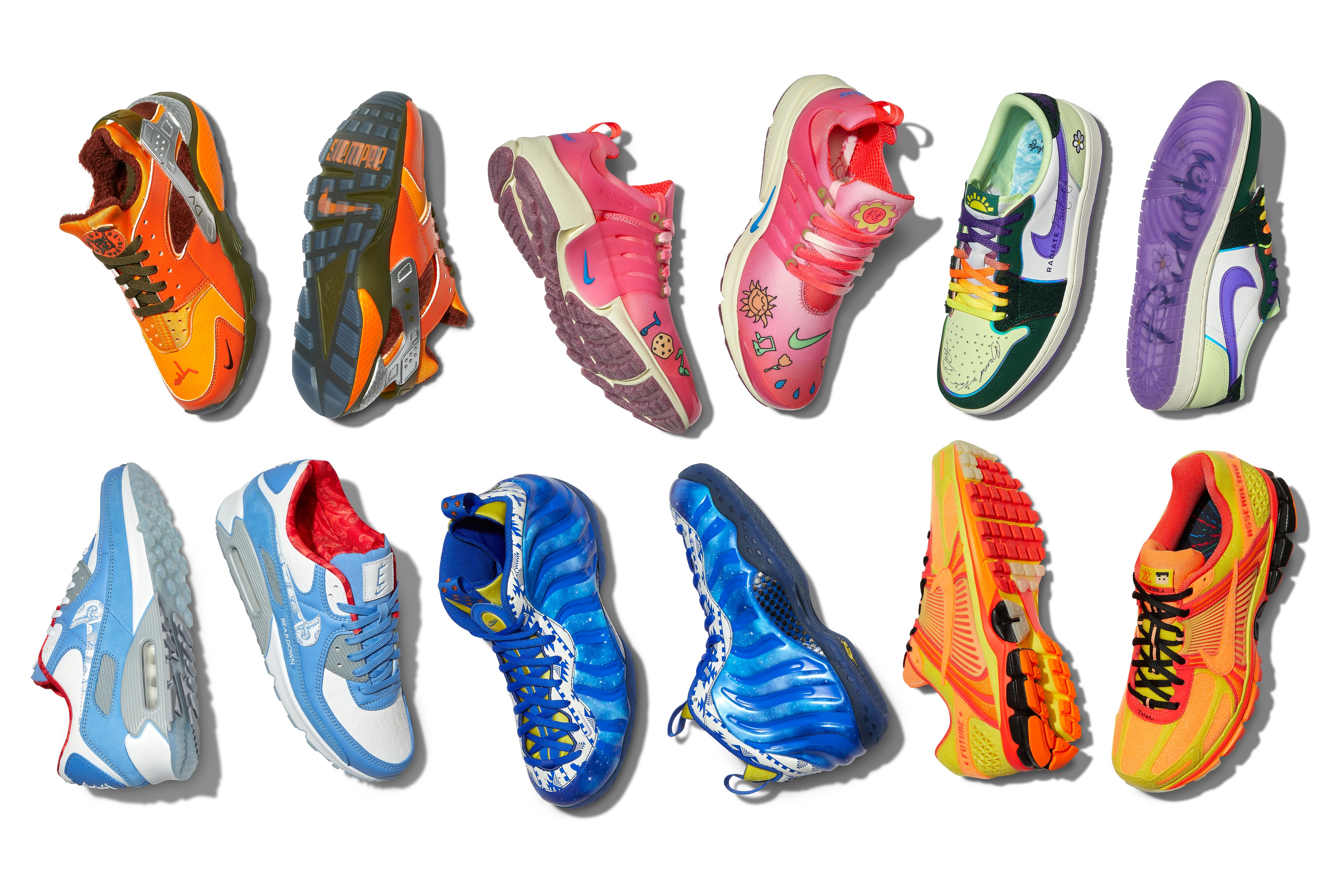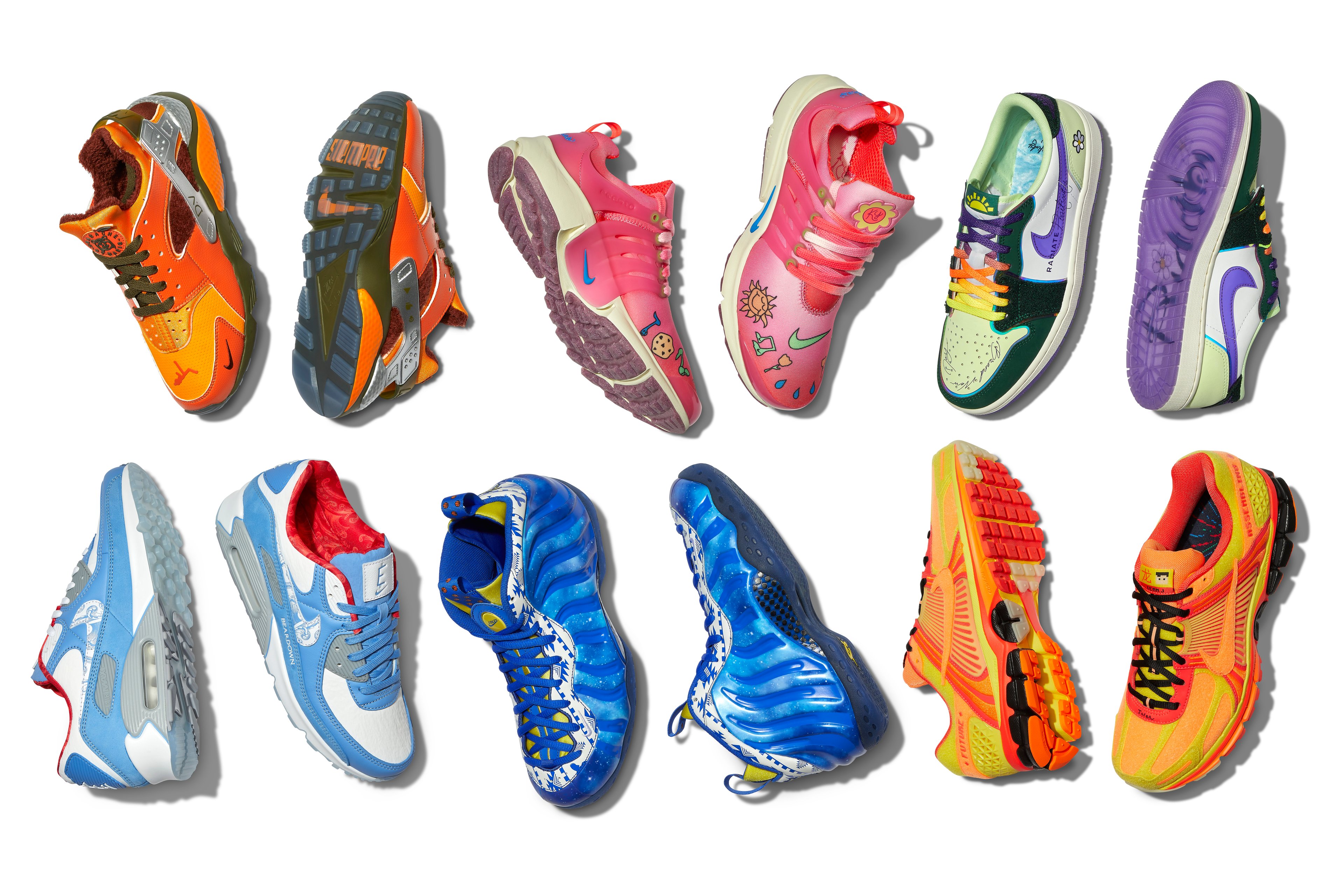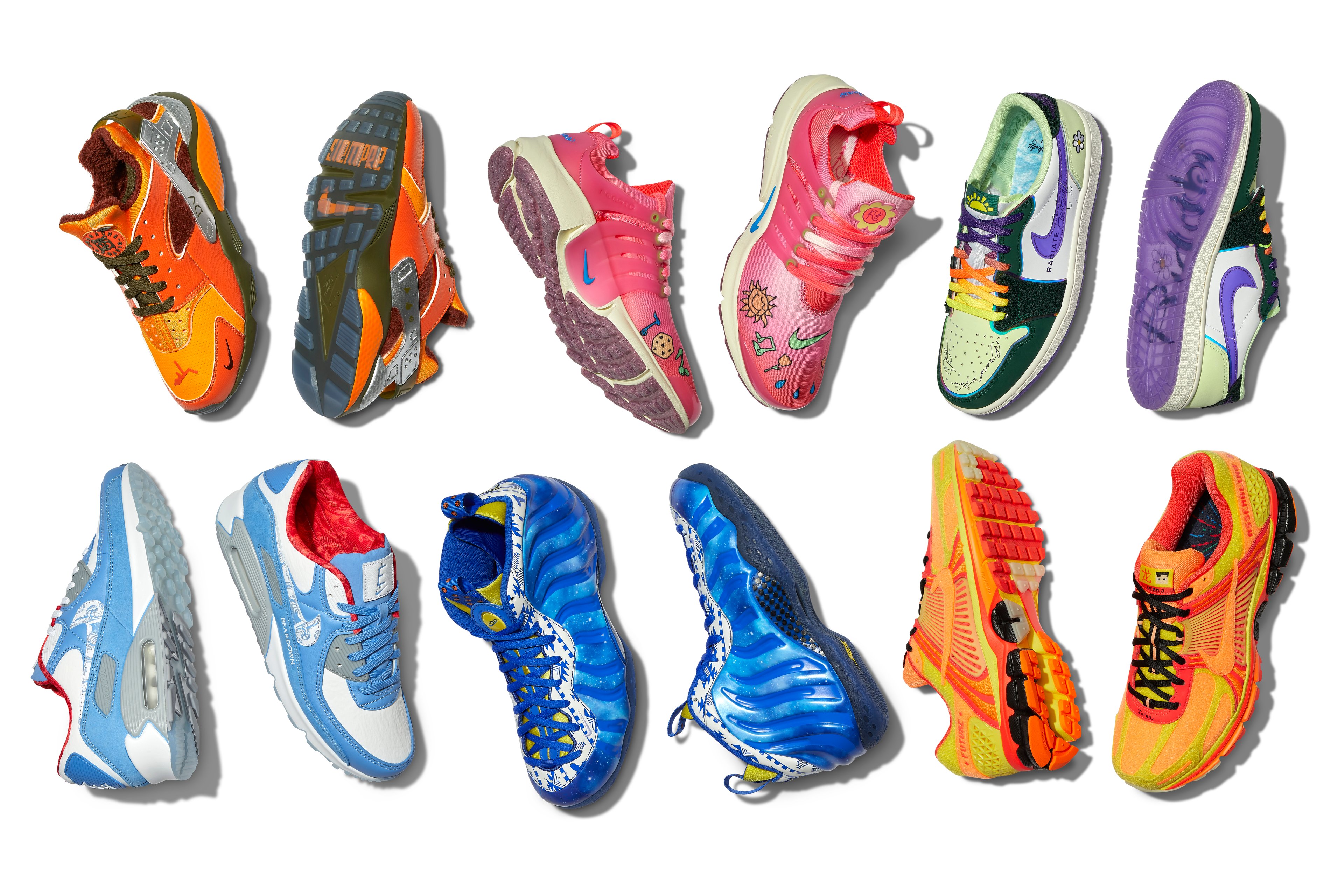"The cowards never started, and the weak died along the way -- that leaves us."
That fitting quote comes from the recently released memoir Shoe Dog by Nike (NKE 0.33%) founder Phil Knight, as he presents the anguish and accomplishments, highs and lows, and surprising twists that led to the behemoth empire Nike has become. From this tale of Knight's and Nike's early days, here are five takeaways that give surprising insight into Nike's current position and future prospects.

Image source: Nike.
1. Nike spent nearly two decades on the brink of bankruptcy
Knight started his shoe company, originally called Blue Ribbon Sports, in 1964 by selling shoes from the trunk of his car at various sporting events. His first year, the company grossed around $8,000, which quickly grew to $300,000 by 1969, $8 million by the time it went public in 1980, and eventually $30 billion by 2015.
What's surprising from the memoir is that Knight and his team kept all possible cash pouring into growth and ran the operation incredibly debt heavy, and because of the constant lack of equity, everything was always just one bad turn of fate away from going under. And that state of affairs lasted for about 16 years.
Many times, Knight questioned whether the company would pull through. It wasn't until Nike went public in 1980, 16 years after it was created, that it was finally on solid enough financial footing to not have to worry about going under at the hands of any single crisis.
2. Quality and innovation were always the end goal
When Knight and the team were looking at factories to build their shoes, they continually fought to improve quality, to make sure their shoes were worth the praise they were getting. Of course, this didn't always work, and Knight writes about the disappointment of receiving lower-quality supply from factories in various countries, and knowing he'd have to sell the the merchandise anyway to raise funds for the next batch of orders. Still, his team constantly strove to beat the competition on quality.
Using a waffle iron and different trials of rubber molds, co-founder Bill Bowerman created the waffle-sole design that nearly all running shoes now have. Back then, the "Waffle Trainer" quickly became the top-selling running shoe in the United States.
When Knight and Bowerman, his former coach, started creating their own innovations and styles, the company started to really take off. Of Bowerman's commitment to new, innovative styles even when he was still a college coach, Knight writes of their early attempts at shoes, "he'd spend days tearing them apart, stitching them back up, then hand them back with some minor modification, which made us either run like deer or bleed."
Then when a young entrepreneur came to Knight with a crazy idea of putting air pockets in the soles of shoes and said that no other shoe company was interested in changing its shoe design so drastically, Knight jumped at the idea. The result was Nike's Air Technology line, which became a major innovative feat.
3. Knight didn't care for advertising
Knight writes that for most of Blue Ribbon Sports and Nike's early years, he didn't see much value in advertising and wanted little to do with it. Luckily for him and the brand, some of his employees did see the value in it and were instrumental in creating the base for what would eventually be large-scale campaigns. Still, Knight didn't fully endorse the idea because he couldn't see the return on investment for expensive print pieces. It's amazing to think that a company with such extraordinary brand power and marketing muscle started out with such a contempt for traditional advertising.
Of course, that doesn't mean he didn't understand the value of publicity. In fact, he fought hard to sign the athletes that helped launch Nike's image in the media and consumer market. Nike's first major athlete was runner Steve Prefontaine, who first showed the world the power of Nike's shoes for serious athletes. Then Nike signed tennis player John McEnroe, and many more high-level athletes from there helped the company to accelerate sales and market share quickly.
4. "An unhealthy contempt for Adidas"
Knight sought inspiration early on by looking to the then-global powerhouse Adidas. Since Nike is now the behemoth world leader in athletic apparel by sales, market share, and brand presence, it's hard to remember it as having once been underdog.
"I was developing an unhealthy contempt for Adidas," Knight writes. "Or maybe it was healthy. That one German company had dominated the shoe market for a couple of decades, and they possessed all the arrogance of unchallenged dominance. I despised them."
5. Knight's views on developing world labor
This was one of the topics I was most interested to hear about in the memoir, and I was disappointed when it was only briefly mentioned in about two pages. The memoir focuses mostly on the early years through 1980 and then spends just the last chapter with an update of everything since, including the demonstrations outside the stores in Portland, Ore., and the calls for Nike to be held responsible for developing labor practices in foreign countries.
But what views Knight does offer are straightforward and strong. He says you wouldn't imagine what those developing world factory conditions would be like without Nike, that the programs and conditions they put in place were an improvement over what other companies were doing. He recounted one story of wanting to pay laborers more when the local government told him he wasn't allowed. He quotes one official: "It's simply not right, he insisted, or feasible, that a shoe worker makes more than a medical doctor."
He also pointed out that once Nike fans did call for better factory conditions abroad, Nike would become the gold-star standard for foreign labor. Knight writes, for example, that Nike developed a water-based bonding agent for shoes, instead of the dangerous chemical one used before that caused respiratory issues for factory workers. Nike gave the recipe for the bonding agent away, and now nearly every competitor uses it. Ultimately, in 2014, Maclean's named Nike one of the most socially responsible companies in the world.
Nike without Knight
Even though Knight himself is no longer the CEO of Nike and will step down as chairman of the board of trustees this year, shareholders continue to be rewarded by the incredibly well-performing company he started. Nike nearly doubled its net income in the past five years, even 35 years after going public. While it's always a concern when a founder leaves the company he or she created, one last important takeaway from the memoir is that even from the beginning, Knight was able to find incredibly talented people to operate the company with him. The past few years have been no exception, so Nike should be just fine even as Knight moves on.







